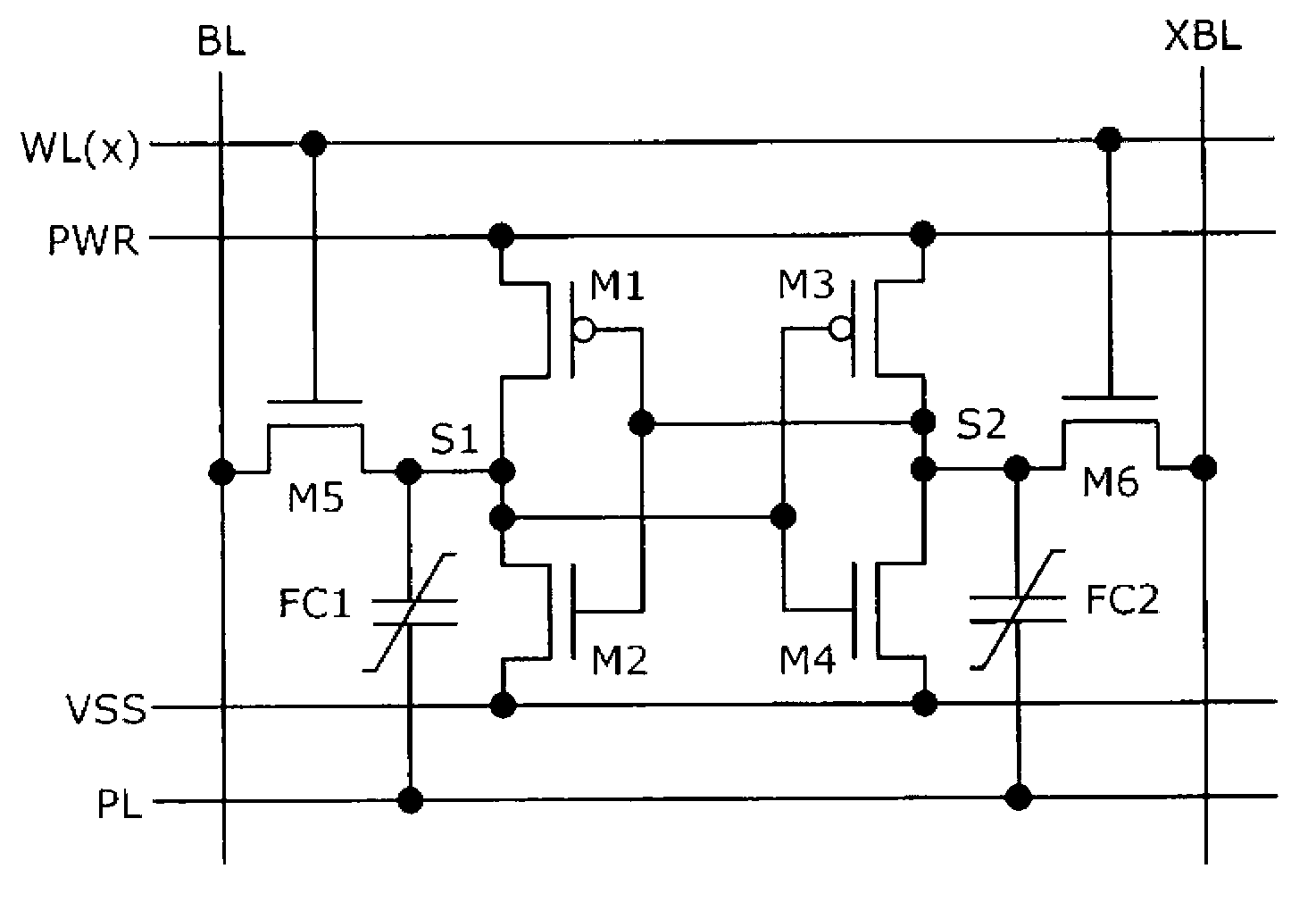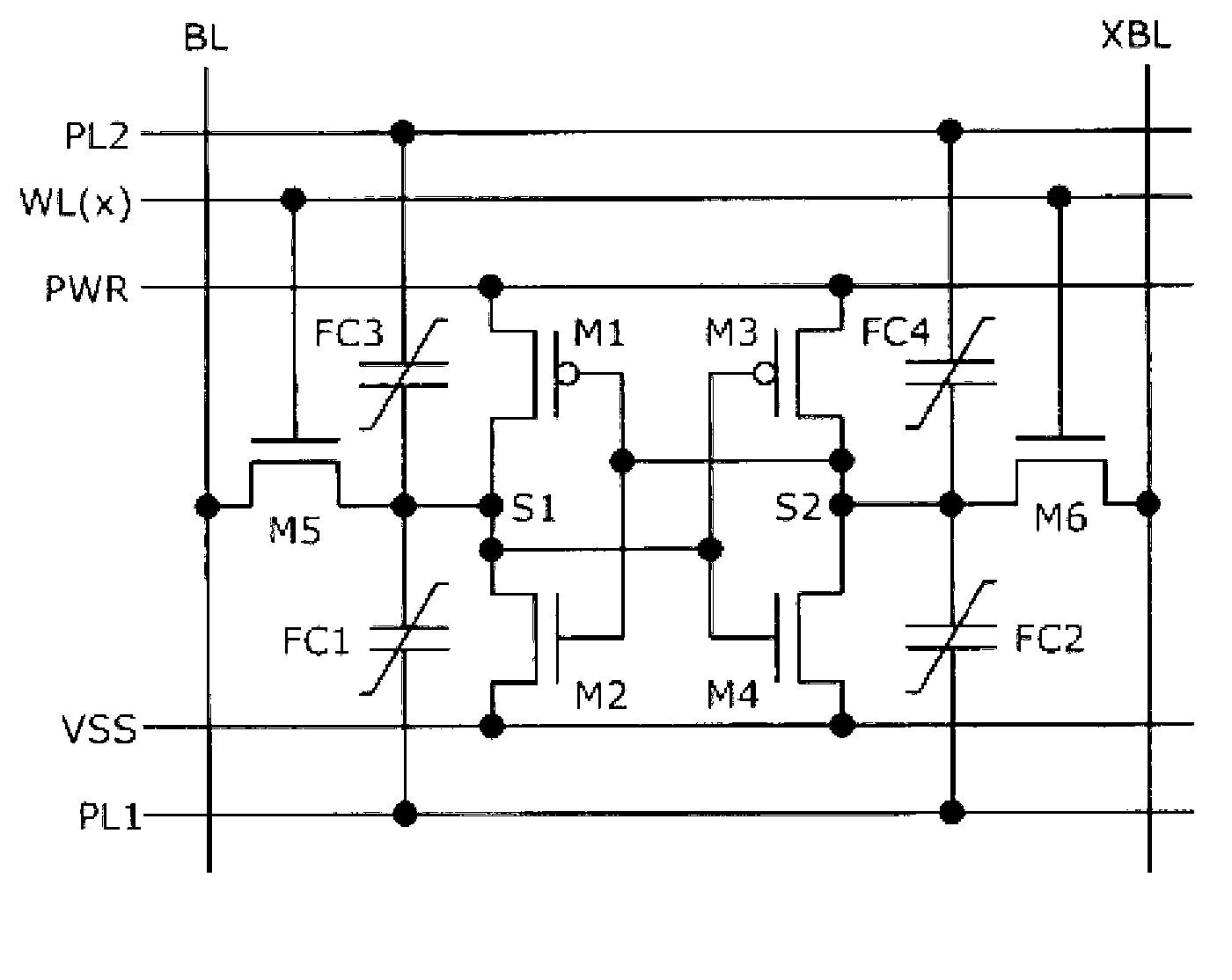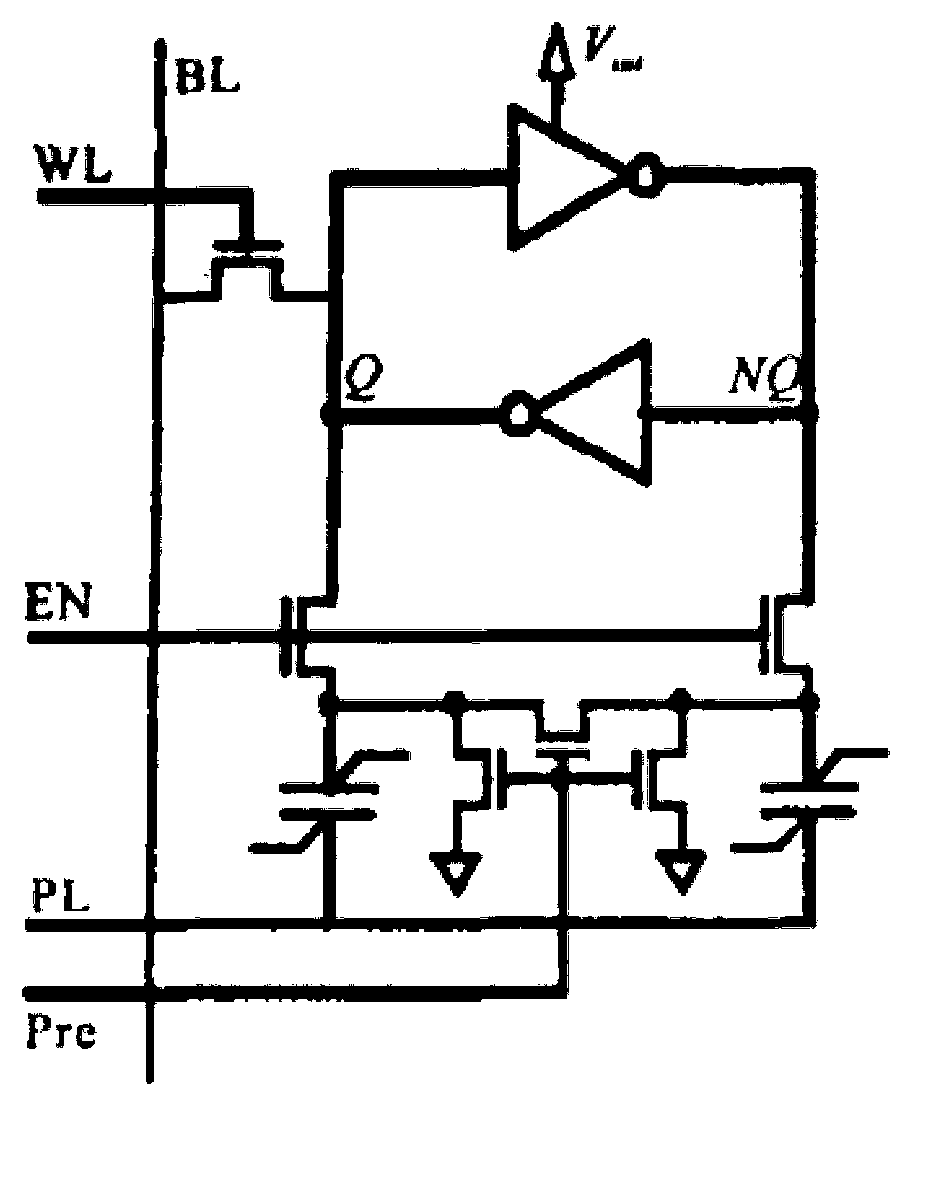Non-volatile highly-resistant-single-particle configuration memory unit
A memory cell and single-particle technology, applied in the field of integrated circuits, can solve the problems of non-mentioned, non-volatile memory, and weakened anti-radiation effect of DICE cells, so as to save the external configuration memory and simplify the system.
- Summary
- Abstract
- Description
- Claims
- Application Information
AI Technical Summary
Problems solved by technology
Method used
Image
Examples
Embodiment 1
[0040] Embodiment 1: see Figure 5 .
[0041] This embodiment includes 8 MOS transistors, gate MOS transistors and PL board lines that form a 4-level DICE structure. Among the 4 nodes (P1~P4) of the DICE structure, the two nodes marked P1 and P4 are used as ferroelectric A connection node, the ferroelectric connection node refers to a node connected to the PL board line through a ferroelectric capacitor.
[0042] Specifically, this embodiment includes a first ferroelectric capacitor FeC1, a second ferroelectric capacitor FeC2, and 10 MOSFETs (M1~M10), wherein the MOS transistors marked as M1, M3, M5, and M7 are PMOS transistors, marked as The MOS tubes of M2, M4, M5, and M8 are NMOS tubes, which together form an 8-tube DICE SRAM structure. The MOS transistors marked M9 and M10 are the read and write gates controlled by the word line WL signal, VCC and VSS are the high and low power supplies of the chip, BL and ~BL are a pair of opposite bit line signals, and the PL signal is r...
Embodiment 2
[0044] Example 2: see Figure 6 .
[0045] The difference between this embodiment and embodiment 1 is that the connection positions of FeC1 and FeC2 are changed. In Embodiment 1, the two nodes at the front and rear ends are used as ferroelectric connection nodes. In this embodiment, the two nodes in the middle are used as ferroelectric connection nodes, that is, the two nodes marked as P2 and P3 are used as ferroelectric connection nodes.
Embodiment 3
[0046] Embodiment 3: see Figure 7 .
[0047] The difference between this embodiment and Embodiment 1 is that in this embodiment, four ferroelectric capacitors FeC1-FeC4 are respectively connected to the four nodes of the DICE.
PUM
 Login to View More
Login to View More Abstract
Description
Claims
Application Information
 Login to View More
Login to View More - R&D
- Intellectual Property
- Life Sciences
- Materials
- Tech Scout
- Unparalleled Data Quality
- Higher Quality Content
- 60% Fewer Hallucinations
Browse by: Latest US Patents, China's latest patents, Technical Efficacy Thesaurus, Application Domain, Technology Topic, Popular Technical Reports.
© 2025 PatSnap. All rights reserved.Legal|Privacy policy|Modern Slavery Act Transparency Statement|Sitemap|About US| Contact US: help@patsnap.com



